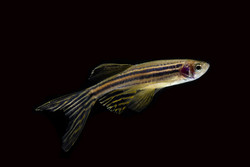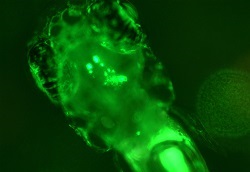Zebrafish heart repair
The EU-funded CAREFISH (Cardiac fibrosis versus regeneration: lessons learned from the zebrafish) project subjected the ventricular apex of the zebrafish heart to extreme cold. Investigation of how the tissue recovers from cardiac cryoinjury may well provide future therapies for improvement of human cardiovascular health. Cryoinjury causes massive cell death and subsequent formation of fibrotic or scar tissue. Unlike the human scenario where the scar tissue remains, the scar in the zebrafish regresses and the injured area is replaced by new cardiomyocytes. Investigation of this amazing recovery showed that prior to cardiac regeneration, there is a massive deposition of collagen. The epicardium or outer muscle layer of the heart supplies the fibroblasts that synthesise this collagen. To track the different populations of cells derived from the epicardium, the researchers compared cardiac regeneration in different cell lines and the different gene expression during scar tissue degradation and myocardial regeneration. CAREFISH found that a group of genes responsible for the cross-linking of collagen and elastin fibres, a process important in maintaining scar structure, were upregulated in the injured heart immediately after a cryoinjury. In mammals it is thought that these cross-linked mature fibers are responsible for the formation of the hard scars found in mammalian hearts after an infarct. This hard scar is difficult to degrade, and is one of the reasons for heart failure in the case of myocardial infarction in humans. Future work will analyse the role of these genes during cardiac regeneration. CAREFISH also analysed the function of genes involved in promoting cardiomyocyte proliferation and contributed to establish protocols to analyse the functional recovery of the cryoinjured heart. CAREFISH work has appeared in peer-reviewed journals such as PLOS ONE, Journal of developmental biology and Cell Reports. The next step will be to ascertain the nature of the biochemical tuning between fibrotic response and regeneration and to translate this into therapeutic options.







